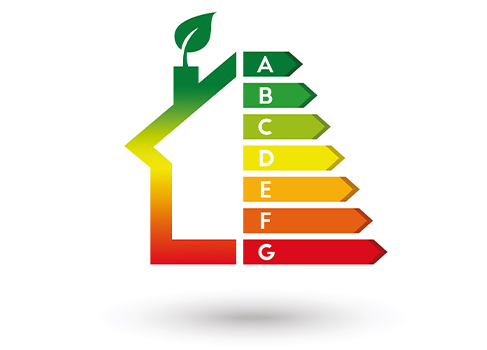- BY Cerys Holt
- POSTED IN Blog
- WITH 0 COMMENTS
- PERMALINK
- STANDARD POST TYPE

Energy Efficiency 101: Unveiling The Truth Behind Upgrading Your Appliances
In a world where environmental consciousness and economic prudence converge, the debate surrounding the replacement of old appliances to save on energy bills has gained substantial traction. As technology advances, so too do the promises of greater energy efficiency. But the question remains: Is replacing your old appliances a fool proof strategy to cut down on energy costs? Let’s delve into the nuances and uncover the truth behind this popular notion.
The Age Factor:
One of the primary considerations when pondering an appliance upgrade is the age of your current devices. Older appliances tend to be less energy-efficient, as they were not designed with today’s stringent energy standards in mind. Appliances more than 10-15 years old may be significantly less efficient than their modern counterparts.
Energy-Efficient Technologies:
The landscape of appliance technology has undergone a transformation in recent years, with a focus on sustainability and energy efficiency. Newer appliances often come equipped with cutting-edge features such as Energy Star ratings, improved insulation, and advanced control systems that optimise energy consumption.
Calculating the Cost-Benefit Ratio:
While upgrading to energy-efficient appliances might seem like a sure-fire way to save on energy bills, the upfront cost of purchasing new devices cannot be ignored. Conduct a cost-benefit analysis to determine the payback period for your investment. Consider factors such as potential energy savings over time and any available rebates or tax incentives.
Appliance-Specific Considerations:
Different appliances have varying energy consumption patterns. For instance, refrigerators and air conditioners are notorious energy guzzlers. If your refrigerator is showing signs of inefficiency, it might be worth considering an upgrade. On the other hand, washing machines and dryers might not have as significant an impact on your energy bills.

In 2020, the United Kingdom unveiled a revamped energy label aimed at enhancing the comparability of energy efficiency across products. This updated label extends the energy performance scale, making it simpler for consumers to assess efficiency levels. Notably, it establishes fresh benchmarks for energy-saving appliances, not only delivering additional cost savings to consumers but also aligning with manufacturers’ and the government’s environmental commitments.
What should you check for on an Energy Rating label?
- How energy efficient the appliance is: Energy Rating from A-G
- energy use in kilowatt-hours (kWh)
Kilowatt-hours (kWh) is a measurement of energy. An energy label will tell you how many kWh an appliance uses over a period of time.
The Phantom Menace: Standby Power:
Even when turned off, many appliances continue to consume a small amount of power in standby mode. Newer models often address this issue with more efficient standby power consumption, contributing to overall energy savings. Consider this “phantom” energy usage when evaluating the cost-effectiveness of an upgrade.
The Environmental Perspective:
Beyond the financial aspect, replacing old appliances also has environmental implications. Manufacturing and disposing of appliances contribute to carbon emissions. Responsible disposal of old appliances and choosing energy-efficient models can help mitigate this impact.
Conclusion:
In the quest to save on energy bills, replacing old appliances is a nuanced decision that depends on various factors. While newer models often boast superior energy efficiency, the upfront costs and environmental considerations cannot be overlooked. Before making a decision, assess the age of your appliances, explore energy-efficient technologies, and calculate the cost-benefit ratio.
Remember, energy efficiency is not solely about upgrading appliances; adopting energy-conscious habits, such as unplugging devices when not in use and maintaining appliances properly, also play crucial roles in reducing energy consumption. In the end, the path to lower energy bills involves a thoughtful blend of technological upgrades and sustainable lifestyle choices.
Lets pause for a moment
A large handful of appliances can get serviced making them more energy efficient and means a new one doesn’t need to be forked out for, just yet.
Before scheduling a repair service, ensure to review the following:
- Callout Fee: Verify the callout fee associated with the service. This initial cost can vary between providers, so understanding this upfront expense is essential.
- Hourly Rate (Post Callout Fee): Inquire about the hourly rate applied after the callout fee. Knowing the ongoing cost helps you gauge the overall expense of the repair service.
- Warranty or Guarantee: Check whether the repair service offers any warranty or guarantee for the work performed. A commitment to the quality of the repair can provide peace of mind.
- Advance Notice on Spare Parts: Confirm if the repair service informs you about the required spare parts before making a purchase. This transparency allows you to understand the components needed for the repair.
- Pre-Approval for Appliance Adjustments: Understand what adjustments or modifications the repair person can make to your appliance and whether these actions require your approval. This ensures that you are informed and in control of any changes made before committing your funds.
By taking these factors into consideration, you can make informed decisions when choosing a repair service for your appliance, ensuring transparency, and minimising any potential surprises in terms of costs or modifications.
Each trader is legally required to give you all of the above information. If you believe a trader has been unlawful regarding a service you have received, citizens advice provide help on how to act.
If you require any help or have general enquiries regarding the above, the IDES team are more than happy to assist – enquiries@idesuk.com

